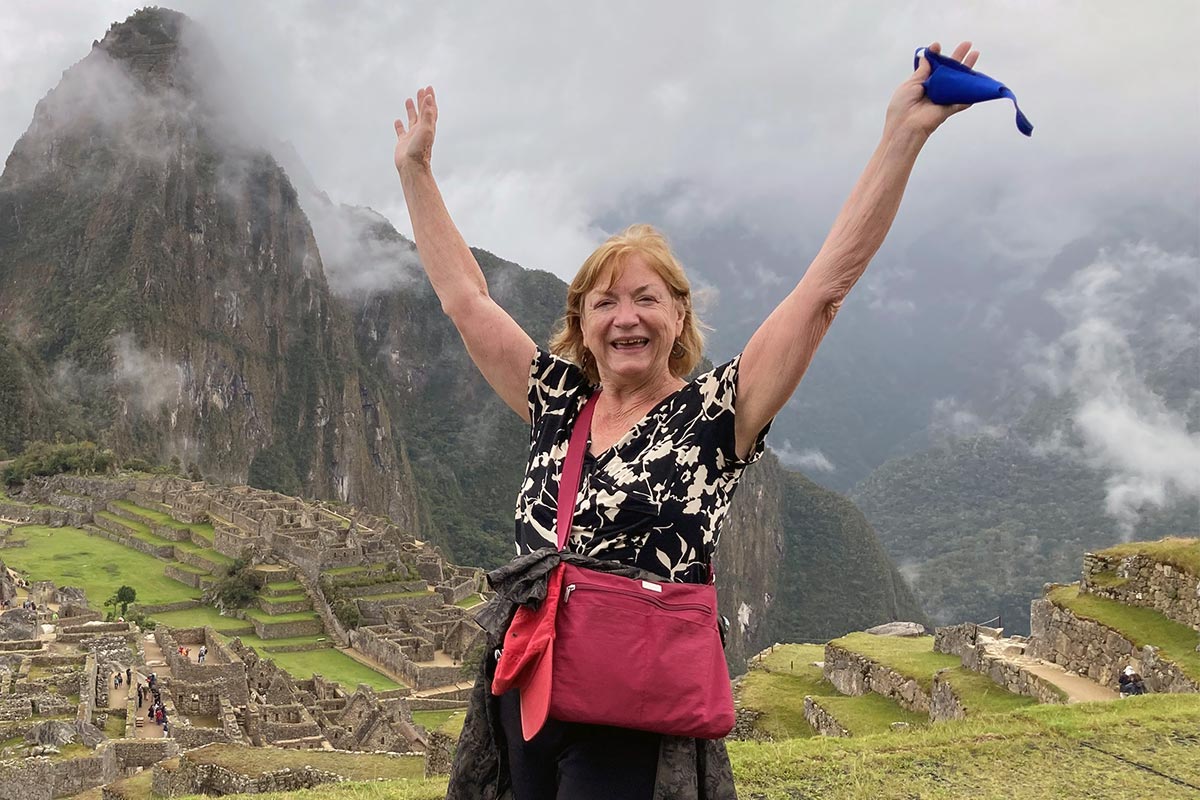
Popular Locations
- Yale New Haven Children's Hospital
- Yale New Haven Hospital - York Street Campus
- Yale New Haven Hospital - Saint Raphael Campus

Published November 08, 2023

Newly retired from a career in accounting, Carol, a mother of four and grandmother of 10, has filled her time with trips to Portugal and the Poconos, gardening, seeing Ringo Starr in concert and visiting all her grandchildren. This wasn’t the case five years ago when increasingly severe symptoms and a misdiagnosis kept her from doing the things she loves most.
Carol began to have difficulty swallowing and food became stuck in her esophagus, which was both painful and frightening. As this progressed, medication and imaging tests left her without a diagnosis. Within months, she was running high fevers multiple times a month, lost over 60 pounds and was having trouble keeping any food down. Carol knew that she had to find a specialist because she couldn’t continue down this path.
Carol’s husband had previously had successful surgery at Yale New Haven Health, so she searched for a gastroenterologist in the network and called to make an appointment. By the time she walked into her first appointment at the Digestive Health Center in New Haven, the multidisciplinary team had reviewed her medical records and determined a diagnosis and treatment plan.
Carol was diagnosed with achalasia, a swallowing disorder that affects the esophagus. It occurs when the esophageal muscles do not contract properly and food is not propelled down toward the stomach.
“Achalasia is rare and, as a result, often misdiagnosed and incompletely managed. At Yale Medicine and Yale New Haven Hospital, we have the experience and expertise to diagnose and definitively treat complex and rare conditions,” said Andrew Duffy, MD, Medical Director, Yale New Haven Health’s Hernia Program and associate professor of surgery, Yale School of Medicine.
After additional tests to confirm achalasia, Carol met with Dr. Duffy to review her diagnosis and treatment. Carol recalls meeting Dr. Duffy for the first time, “I liked him right away. I felt like I was in good hands. He explained to me that without this procedure I was at risk for my esophagus to rupture or stop working.”
Dr. Duffy performed a Heller Myotomy procedure, where the muscles of the lower esophageal sphincter are cut to better allow food and liquids to pass into the stomach.
“Minimally invasive and now robotic treatment of achalasia is one of my more satisfying surgeries to perform. The main reason is that the patients are smiling in the recovery room. They can tell immediately that the problem was successfully treated,” said Dr. Duffy.
Carol immediately felt the relief she had been waiting for years to experience. After the procedure, she was able to eat the foods she loved and go back to her beloved hobbies without fear of her symptoms flaring up and without pain.
Now Carol emails Dr. Duffy on the anniversary of her surgery each year to thank him for giving her the chance to live her life to the fullest and tells him everything she did the previous year that she wouldn’t have been able to do before her procedure.
“I’m forever grateful for the Digestive Health Center and how they reviewed everything, knew what was wrong before I got there and knew the right steps to take. That was the beginning of a changed life for me,” recalled Carol.